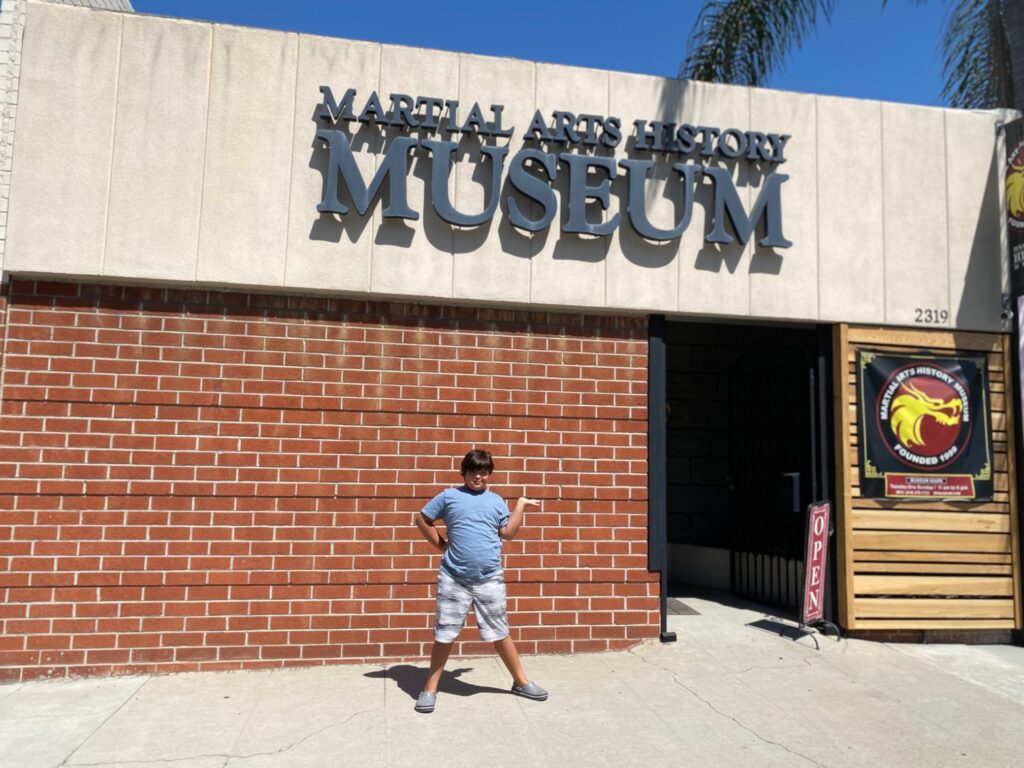
Last summer, my youngest son, Constantine, and I had the pleasure of visiting The Martial Arts History Museum, formerly located in Burbank (with an upcoming new location in Glendale). We had some time on our hands, and it was a great opportunity to explore something new. At the time, Constantine had participated in martial arts classes off and on for a couple of years, and we had plans to enroll him back in classes in the fall.
Visiting the museum by chance that hot summer’s day was the beginning of an important new connection.
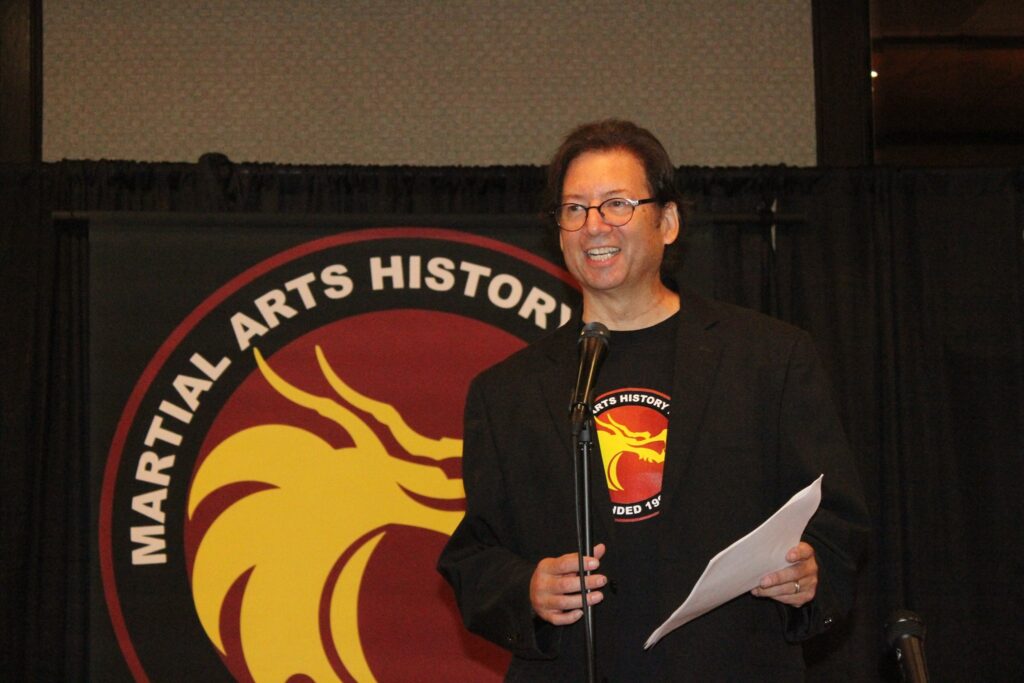
When we entered, we were greeted by a soft-spoken, kind man, who is a fount of knowledge. Turns out, he was the museum’s president and founder, Michael Matsuda. In an instant, we were immersed in the culture and esteemed heritage of the martial arts. It was an unexpected and thorough lesson and cultural immersion.
Before Constantine and I began walking through the exhibits, this off-the-cuff discussion with Master Matsuda prepped us for all the artifacts, symbols, photos, videos and creative displays we were about to be treated to. As we began touring, the museum objects, placards, and video displays demanded my attention, and more importantly, Constantine’s.
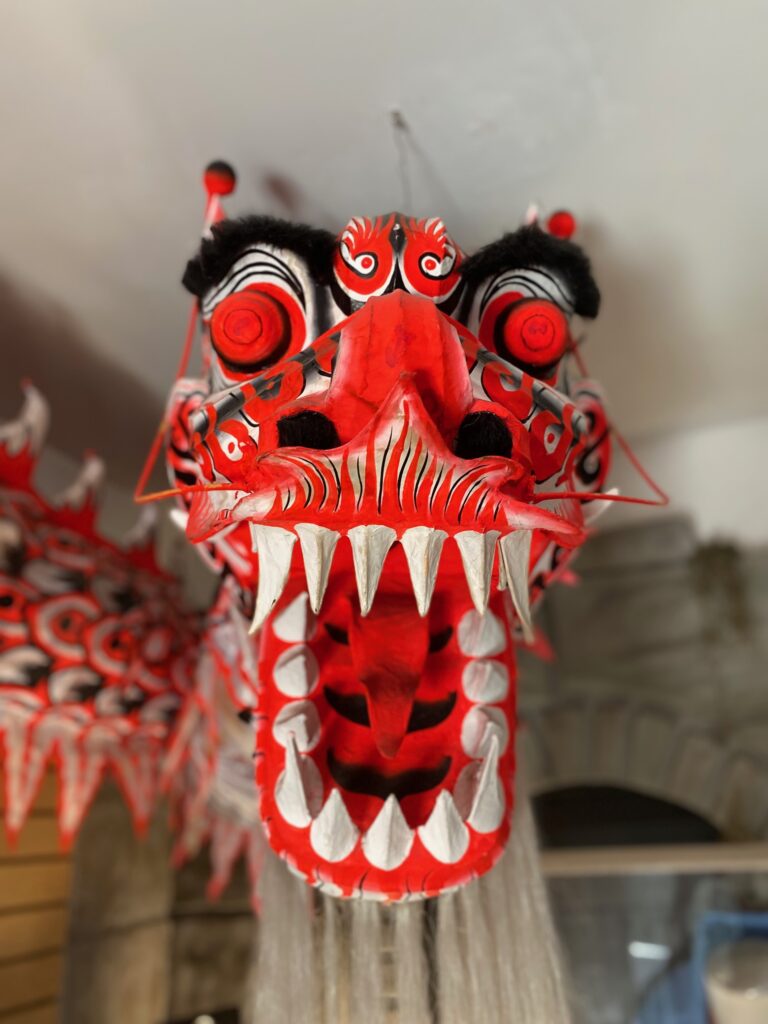
Fast forward several months and today that Burbank museum has closed… and will be reopening its doors at its new location in Glendale later this month (March 2024). Check out the museum’s latest IG live video for a preview of the new space with a BTS tour shared by Master Matsuda.
At 8,000 square feet (the former location was 1,600 square feet), this new locale will boast a theater, exhibits representing a variety of the martial arts from various Asian countries, a full-fledged store, and many new exhibits. The new Martial Arts History Museum will be a must-visit destination for all martial artists, fans of the medium, and general cultural enthusiasts. African, Native American, Scottish, and Irish arts will have a home at the museum, too. Plus, MMA will be a featured form, as well.
One special exhibit shoutout, that I am pleased to mention during the current Women’s History Month, goes to the museum’s planned Women Warriors Through the Ages exhibit. It is a visionary contribution by martial artist Michelle Manu. The permanent exhibit and video viewing area will include artifacts and a timeline of heroic women throughout history. Personally, I’m most excited about visiting this special feature of the museum that will surely guide visitors through a centuries-long tribute to female fighters.
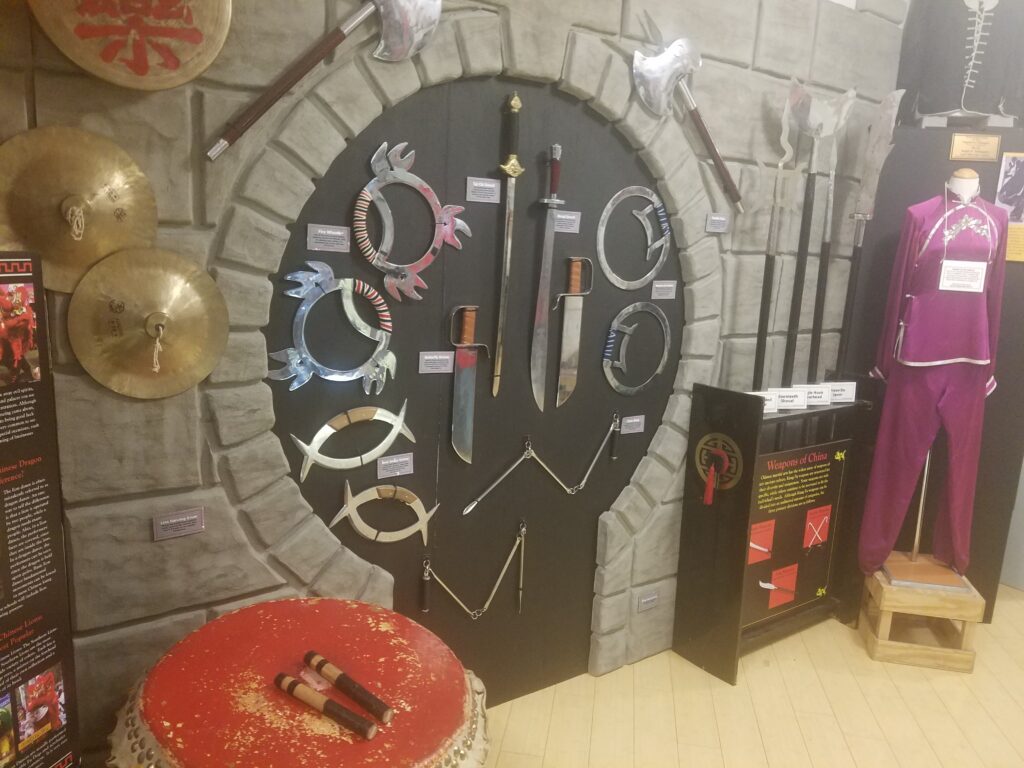
As the preparations for the museum continue to unfold, those of us who have been following his journey realize we are watching Master Matsuda’s dream as it comes to life; it’s a realization of his decade’s long goal. Nevertheless, I was surprised to learn that this new space is more of a preliminary stop; since Master Matsuda has his eye on an even larger, permanent, and standalone location that will allow the museum to become a generational legacy and a forever tribute to this art of self-defense and intensive combat sport.
Recently, through the building excitement, I asked Master Matsuda about the new location. (As an example of his kind and approachable nature,
Master Matsuda insisted I call him Michael, but somehow in print, that moniker simply didn’t translate the respect he’s earned, and that which I wished to portray in this piece.) I hope you enjoy this first part of our conversation:
María: Tell us about the new Glendale location. What does it mean to have achieved your long-term goal— a larger museum location in Glendale?
Master Matsuda: I am truly excited at what lies in store for the Martial Arts History Museum now that we have our new, larger facility in the city of Glendale. It has been a 25-year journey from a traveling exhibit, a small building and now to a much larger step to keep history alive.
Our transition from Burbank to Glendale can be addressed in many positive ways. First, a bigger place allows us to finally be able to accommodate the school districts. At Burbank, we could only fit 30 kids. At this new place, we can have 100 kids at a time. Second, we are moving to the heart of Glendale which has some of the biggest walk-by traffic in the city. Third, we will have a 130-seat theater in which we can show movies. And fourth, we will be able to have a large-sized store so people can buy souvenirs and be supportive of the museum.
The museum brings more culture to Glendale, and it became the third museum within the city. I’m excited to know that kids from all over the world can enjoy and appreciate other cultures and traditions at the Martial Arts History Museum.

As you read from the master himself, the new location in Glendale is substantially larger and will have more exhibits, the ability to accommodate more school requests for field trip visits, a theater for viewing and performances, plus a museum shop!
Master Matsuda speaks passionately about living his life with martial arts at his core. Like many who initially seek out the self defense classes, Master Matsuda was bullied as a kid. Learning martial arts was a way to protect himself. But as you’ll read our interview, you’ll discover karate became a way of life for Michael with each year he trained. His connection to martial arts inspired a passion to preserve the symbols and relics of the art form for posterity and to teach kids about the art form’s history.
While the museum is in some ways geared to appeal to kids, it’s a space that adults can connect with, too. In fact, there’s much community appreciation around the existence of this unique museum with its adult cultural and martial arts-related events, children’s school field trips and fun parent-and-child afternoon exploration.
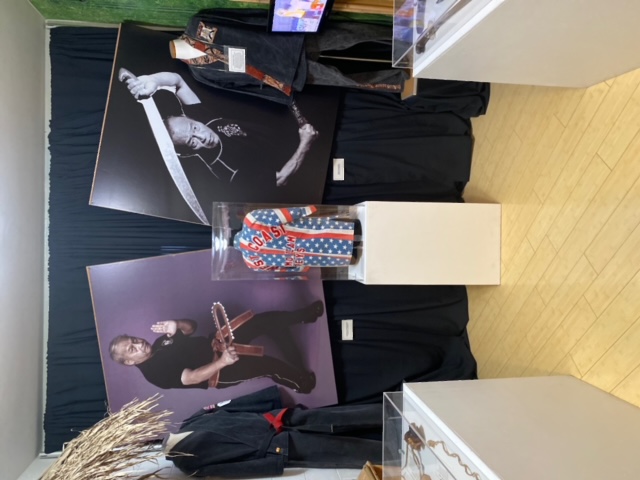
María: When did you open the original museum?
Master Matsuda: Around the early 1980s, after I was writing for Inside Kung Fu and Black Belt magazine, I decided to start my own magazine; Martial Art Magazine in 1983. I ran it till 1988 and sold it. I wanted to focus more on Asian art and history as it connects with the martial arts, but I kept getting tournament ads so I had to cover tournaments. Someone made me an offer in 1988, and I sold it. It was then that I had the idea for a museum, and I approached my friends to talk about it. It was Doug Wong who I talked to first, and I wanted his support.
However, I did not want to start something I knew nothing about, so I went back to school for another 8 or so years, learning how to do a museum. I got a business degree, took many courses in marketing, design, public relations, you name it. I wanted to make sure this wouldn’t fail so I didn’t do anything until I finished everything I needed to, to open a museum.
In 1999, my friend, Fariborz Azhakh started a web page. Now, that was a really new [idea] at the time. He said, if I help him design his page, he would help me make a webpage for the museum. So, on Sept. 15, 1999, the Martial Arts History Museum was officially launched to the world at www.martialartshistorymuseum.com.
María: What was the real inspiration behind opening the Martial Arts History Museum?
Master Matsuda: Great question. Growing up in the martial arts I was able to experience everything. It was like growing up when the automobile was first introduced. Since the late 1960s, I have seen everyone come from Asia to America and later become icons in the arts.
I remember Gene LeBell when he was wrestling, when my father used to take us to the wrestling matches down the street. I was only about 10 years old. I remember it like yesterday. I remember when Fumio first came to America, and I shook his hand. I remember the Tracy’s studio and Al Dacasocs and Ark Y. Wong and so many that became iconic figures in history. When I started writing for Inside Kung Fu and Black Belt magazine, I really wanted to focus on history rather than techniques, because, I felt history was so important.
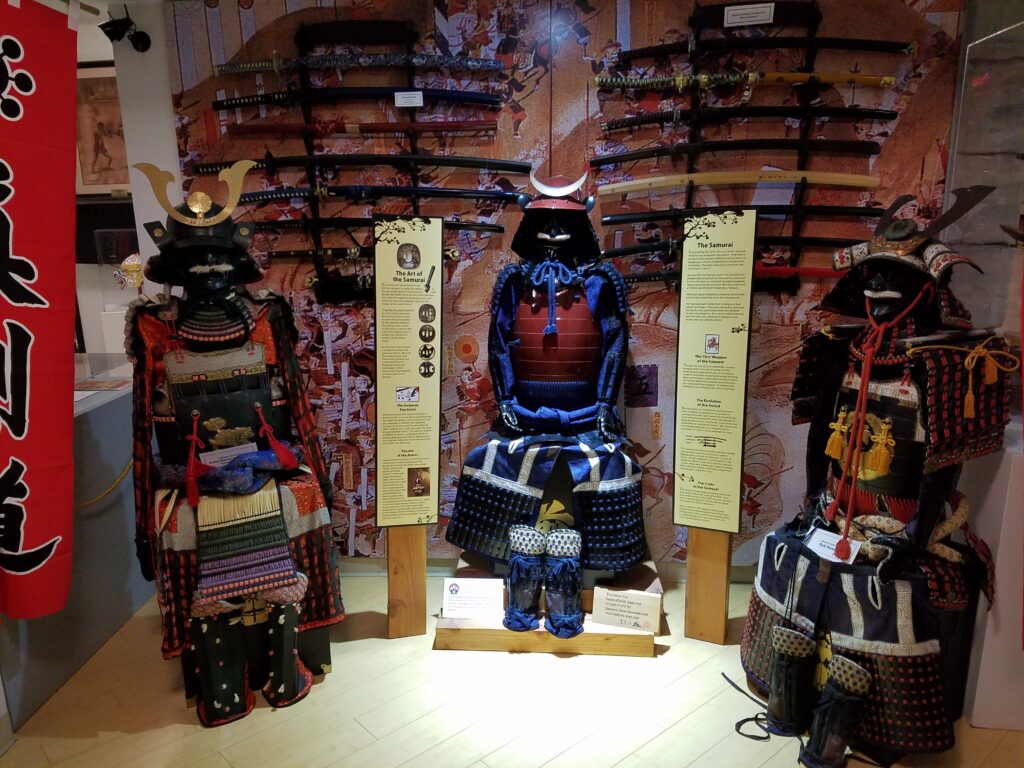
The martial arts is a huge part of my life; it’s what I’m about. How it came to America, to experience that, to be part of that history is something that is awesome. I can honestly say, I was there when giants roamed the earth. I wanted to make sure that that history won’t be lost. But also, because I lean so much on Asian culture, I also wanted more for people to understand where the arts came from; how it impacted a particular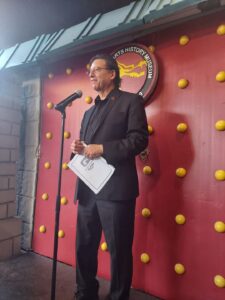 country; how it changed [communities within nations], how it was part of [a shared] history and how it became part of our history. Everyone knows about the punch and kick; let’s learn about where it came from, the art, the culture, the tradition, the uniqueness of Asian culture. It’s great to learn about our icons, but what came before them [is significant, too].
country; how it changed [communities within nations], how it was part of [a shared] history and how it became part of our history. Everyone knows about the punch and kick; let’s learn about where it came from, the art, the culture, the tradition, the uniqueness of Asian culture. It’s great to learn about our icons, but what came before them [is significant, too].
María: What is the museum’s mission?
Master Matsuda: Our mission statement is:
The mission of the Martial Arts History Museum is to promote an appreciation of America’s cultural diversity by using the martial arts as its gateway into sharing how Asian history became part of American history.
María: How will the new museum differ from the original location?
Master Matsuda: First off, we will be able to expand the displays. Right now we focus on Asian arts, but I also want to include other arts such as Indian arts, European arts, wrestling, boxing, etc. There will be interchangeable exhibits that focus on many different things every month. There will be a resource center for studying the arts, a huge museum store to support the museum, a large theater to host many events and film festivals, a seminar area so that people can have their seminars here rather than their school. We will have a restaurant and so much more. We will have touch screens for different languages.
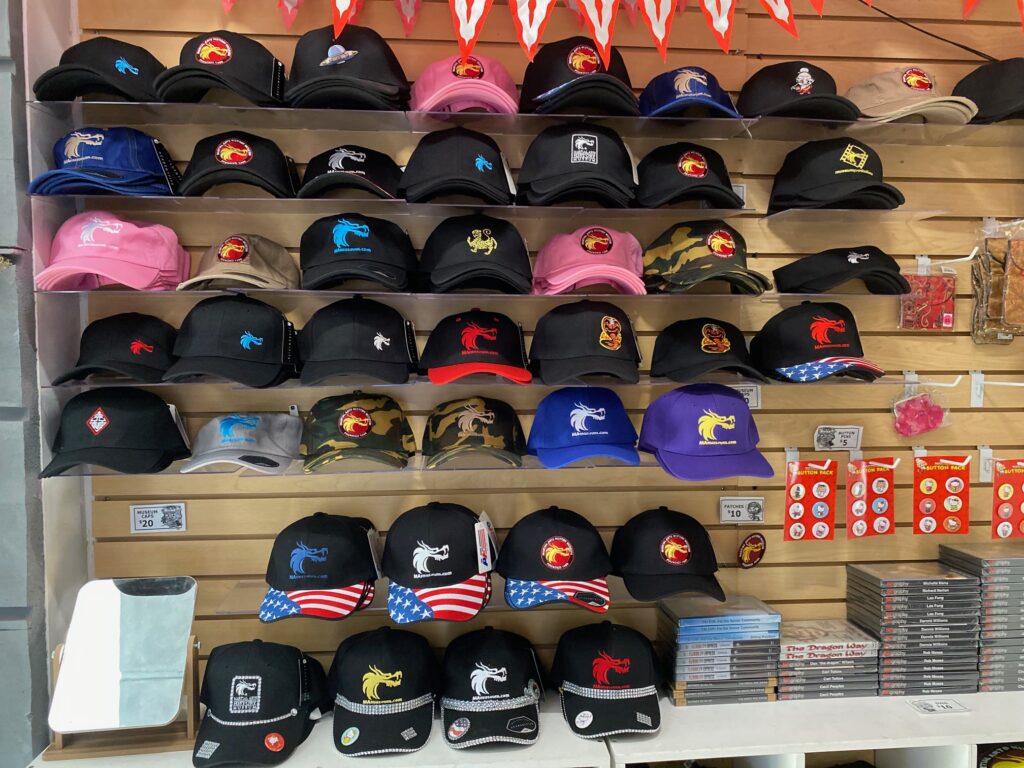
Wow! This sounds phenomenal. I cannot wait to share news of the upcoming new location with our audience. This truly will be a Destination: Day Trip attraction to top many moms’ lists for spring break and summer-day getaways!
María: What types of events will you host inside the museum’s theater?
Master Matsuda: Movie screenings are our big things, but we also have Honor Days that bring in tons of people. We have junkets and book signings. We even have small concerts. Our theater is used nearly every weekend. Just wait till we have a huge theater!
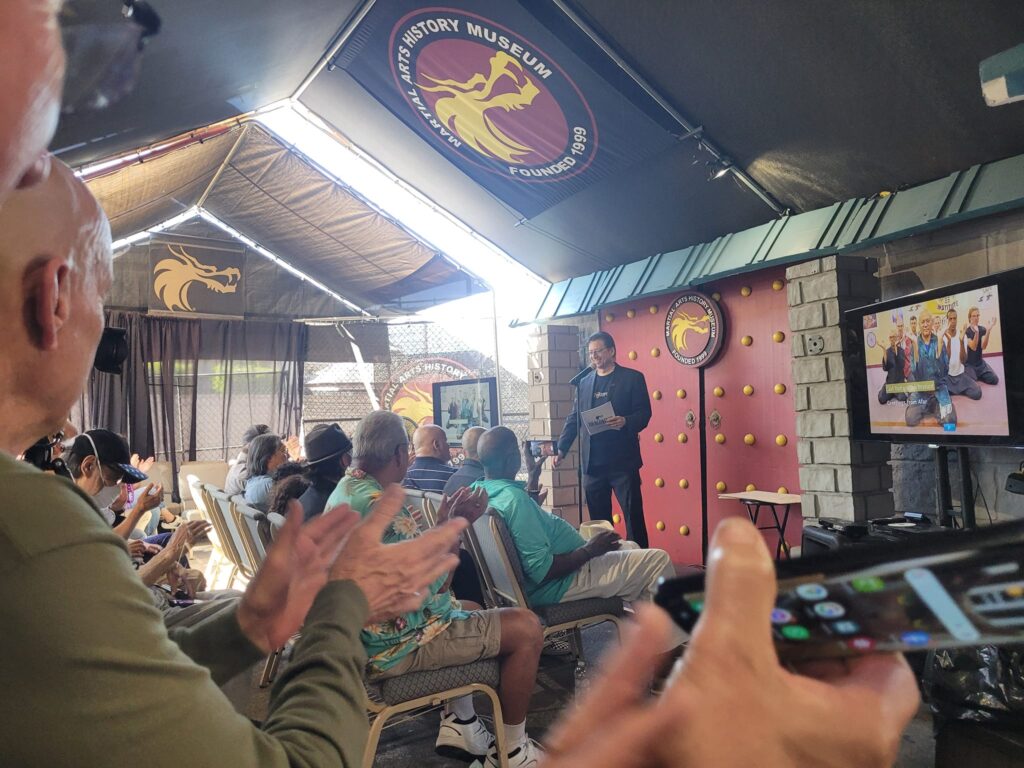
And if you clicked the link above to take a behind-the-scenes look at the nearly read-to-open new location, the 100+ seat theater carve-out within the museum has become a reality! How exciting this is to see Master Matsuda’s dream realized in the span of developing this article.
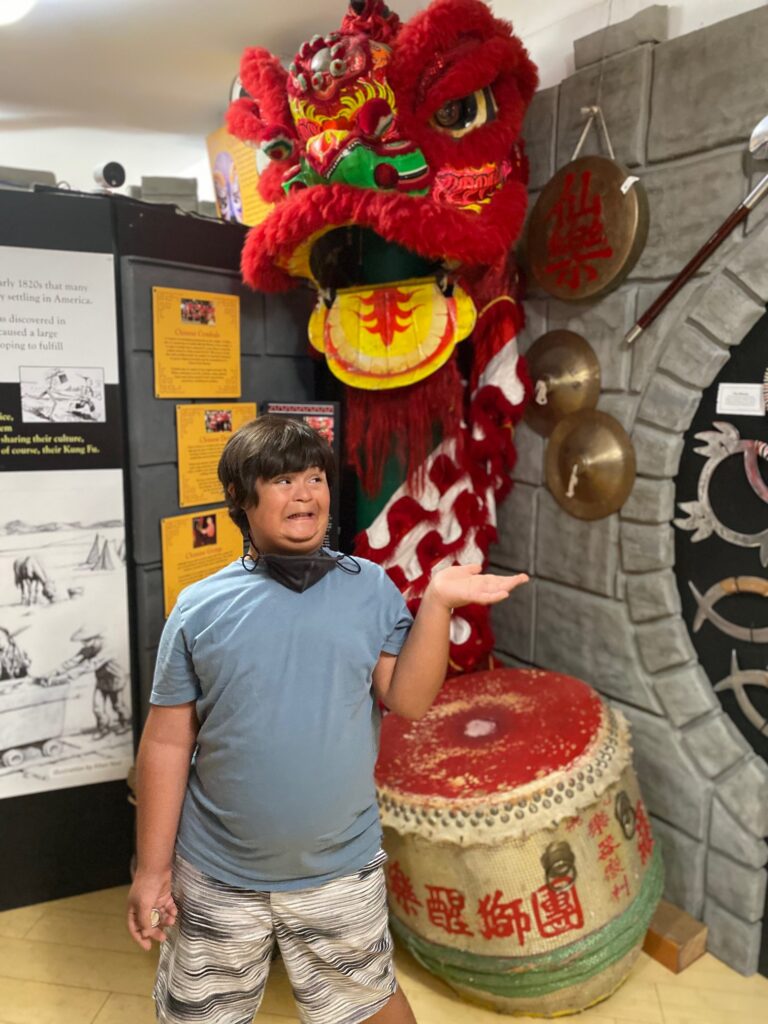 The original museum was an incredible find. Without a doubt, the new location in the City of Glendale is shaping up to be a showplace full of new exhibits, a theater, a well stocked gift shop… a Giving Tree… and so much more! As the Master said recently, “It’s about keeping our history alive.”
The original museum was an incredible find. Without a doubt, the new location in the City of Glendale is shaping up to be a showplace full of new exhibits, a theater, a well stocked gift shop… a Giving Tree… and so much more! As the Master said recently, “It’s about keeping our history alive.”
We hope you’ll consider becoming a member or patron, or donating to this important 501 (c) (3) organization to help assist in the museum’s mission to keep the history of martial arts alive and explorable for generations to come. During this Women’s History Month, kindly consider making a special donation to the Women Warriors’ permanent exhibit, envisioned by Michelle Manu to celebrate the female role of protector through the centuries.
Please check back for news of the new Martial Arts History Museum’s grand opening date and to read more of our interview in the coming weeks!
Written by Maria Felicia Kelley
@thenorthcountymoms | @1MariaFelicia
The North County Moms

